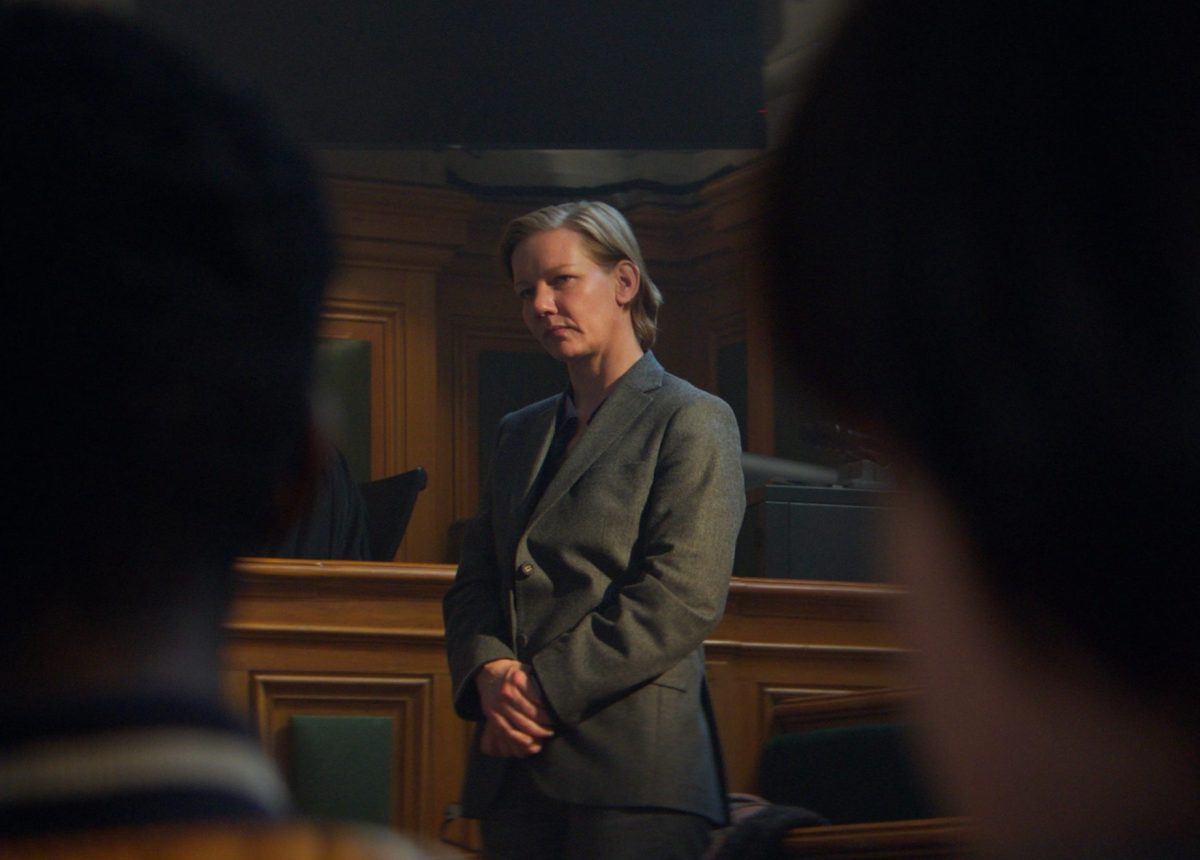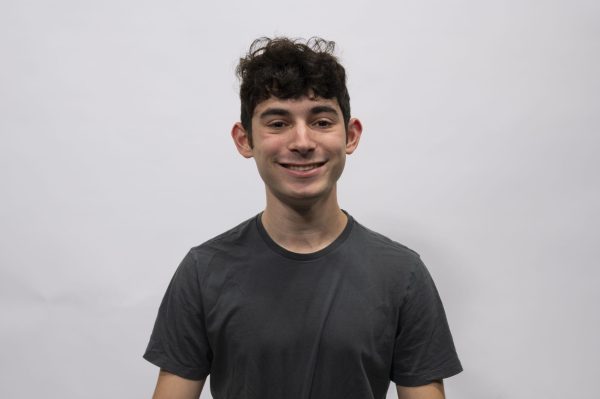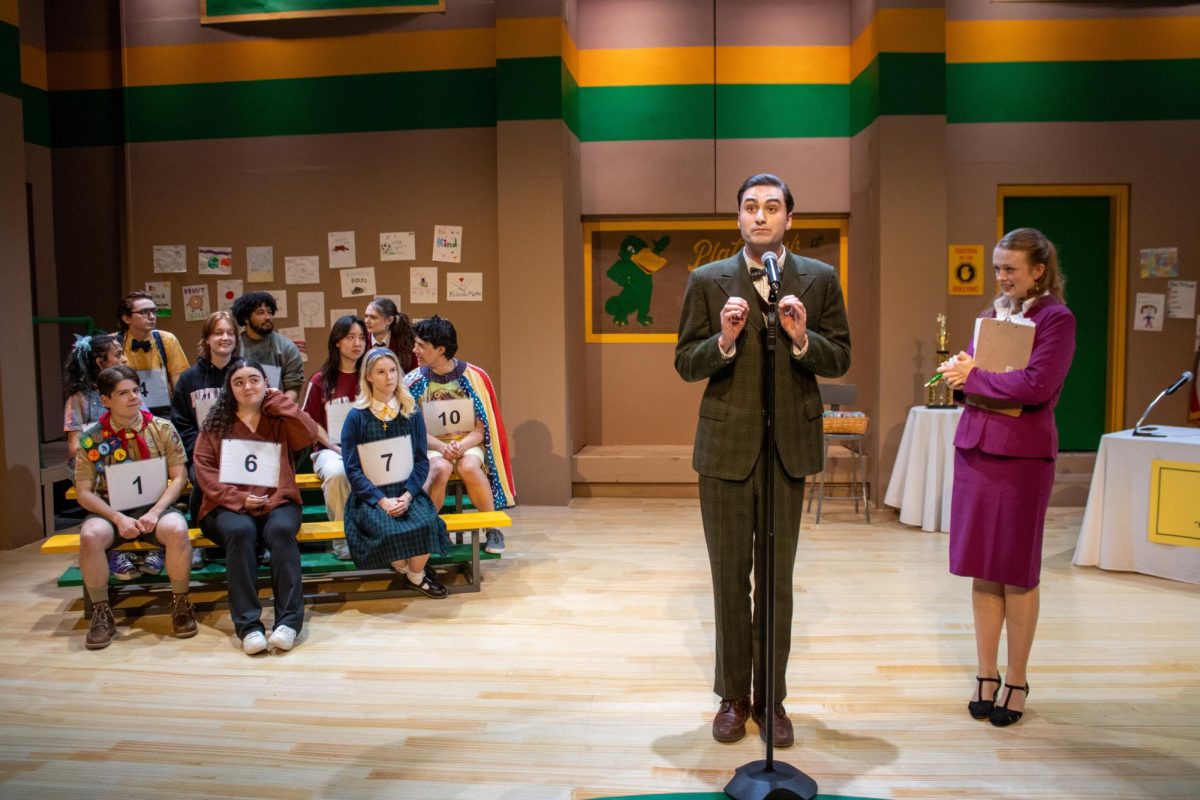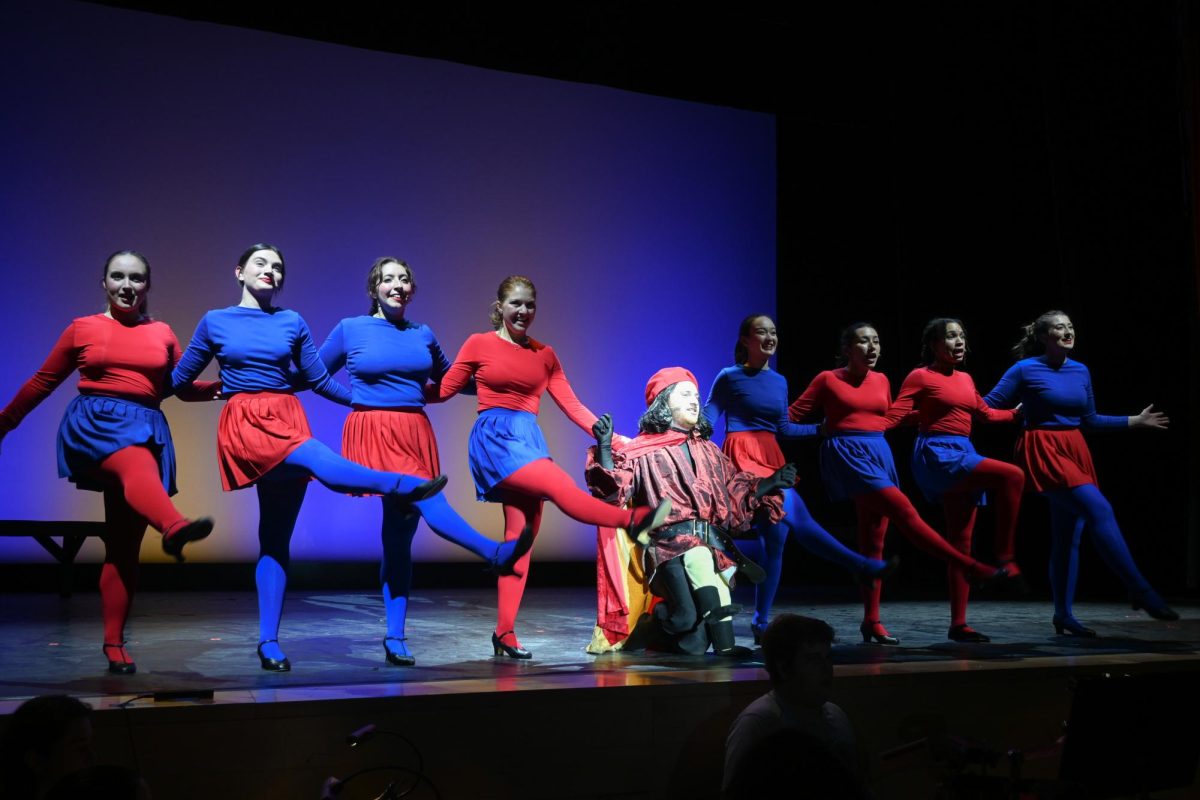A marriage’s tragic demise is deconstructed in “Anatomy of a Fall,” writer-director Justine Triet’s courtroom thriller that leaves no simplicity in its underlying mystery.
“Anatomy of a Fall” centers on Sandra (Sandra Hüller), a German writer who lives in France with her husband Samuel (Samuel Theis) and their young son Daniel (Milo Machado-Graner). When Daniel finds Samuel dead, apparently from a fall from the attic window, the suspicious circumstances and evident difficulties in the marriage leave Sandra fighting to prove her innocence.
Much of the film is set in a French courtroom, where the mission to determine the truth becomes a free-for-all. Unlike an American trial, Sandra is legally obligated to give the answers herself, with her lawyer Vincent (Swann Arlaud) merely an aid. There is no Fifth Amendment, so Sandra has no way to dodge any questions from the prosecution — all she can do is pray that the jury will believe her story.
Nominated for five Academy Awards, including Best Picture, “Anatomy of a Fall” also received the Palme d’Or, the top prize at the Cannes Film Festival, which many consider to be the most prestigious film award in the world.
“Anatomy of a Fall” deviates from the typical murder mystery movie, as Triet intentionally distracts the audience from thinking about whether the death of Samuel was a murder at all. The real puzzle is the circumstances of this seemingly happy family and what exactly occurred before the incident.
Triet’s screenplay, which she co-wrote with Arthur Harari, makes the viewer switch beliefs nearly every minute. Pieces of evidence are continuously revealed, but it is ultimately Sandra’s willingness — or unwillingness — to give answers that determine the audience’s allegiance.
Triet’s style does acknowledge her story’s uncertainties and requires the audience to form its own conclusions. The film is shot in a handheld style, resulting in a documentary-like experience similar to watching “The Office.” There is no musical score; all sounds and music are diegetic or heard by the characters within the film.
This creates an illusion that separates “Anatomy of a Fall” from other courtroom dramas. Triet is not presenting this story but is instead making viewers active participants in it. While watching “Anatomy of a Fall,” a spectator feels as if they are an investigator, judge and jury member all at once.
This will not appeal to all viewers, especially when the credits begin to roll. Answers are given, but the viewer must continue to question everything they learned over the two-and-a-half-hour runtime. In a way, the experience of “Anatomy of a Fall” continues after the film itself ends.
Arguably, the most enticing aspect of “Anatomy of a Fall” is Daniel’s character. Considered a witness to his father’s death, investigators subject Daniel to harsh questioning, forced reenactments of his account of the incident and even more questioning in the courtroom. The toll of it all weighs on Daniel by the end of the film, as he discovers details about his parents that no child should ever have to learn.
Daniel becomes an embodiment of the confusion and heartbreak the audience feels while watching the film. In one scene, Daniel confesses to a confidant that, despite all the truths he’s learned, he still cannot determine any answers. Triet and Harari’s brilliant screenplay allows the audience to feel tremendous empathy for Daniel — he is not just a centerpiece of the story, but he is also a representative for the viewer as the details unfold.
Although the courtroom is the film’s central location, flashbacks to before the incident give profound depth to each character and draw outstanding performances from each actor. In the film’s best sequence, a segment of Sandra and Samuel’s crumbling marriage, Hüller’s ability to seamlessly switch emotions transforms how the viewer interprets her character to that point.
As Sandra’s lawyer, Arlaud perfectly communicates a mix of loyalty and doubt in Sandra, especially as the trial reaches its later stages. Despite his little screen time, Theis, playing Samuel, breaks the viewer’s heart as a burdened husband and father.
“Anatomy of a Fall” is a long, difficult watch, but it is an interactive cinematic experience that invites the viewer to decide many of the answers. A brilliant study of truths and lies, “Anatomy of a Fall” earns its place among the all-time great courtroom dramas.

















